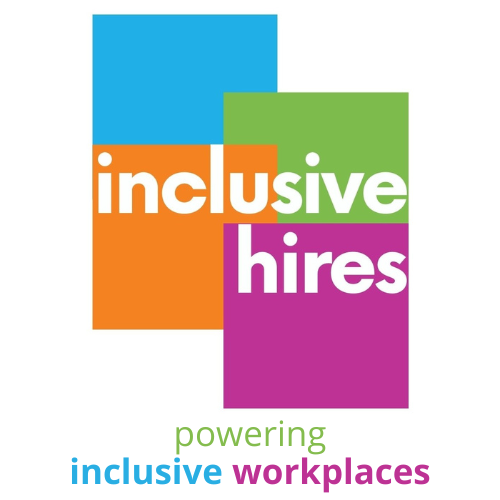
Celebrated annually on January 17th, International Mentoring Day was founded in honour of the legacy of champion boxer, activist and cultural icon Muhammad Ali, who engaged people globally through formal and informal mentoring.
To mark the day, let’s explore reverse mentoring – what it involves, why it’s important, its benefits, and how to effectively manage it, with a specific focus on how it fosters inclusion.
In a traditional mentoring relationship, the more experienced or senior individual (the mentor) provides guidance, support, and advice to a less experienced individual (the mentee). However, in recent years, reverse mentoring has emerged as a powerful tool for fostering inclusion, promoting diversity, and enhancing learning in organisations.
In reverse mentoring, the roles are flipped: a younger or less senior employee mentors a more senior colleague. This practice challenges the conventional hierarchy and brings valuable insights from diverse perspectives, creating a more inclusive and dynamic work environment.
What is Reverse Mentoring?
Reverse mentoring is a mentoring model where the traditional power dynamic is inverted. In this model, an employee from a less experienced or traditionally underrepresented group (based on factors such as age, race, gender, disability, or sexual orientation) takes on the mentor role, guiding a more senior colleague. This process allows the senior employee to gain insights from someone with a different perspective, while the mentee (often younger or from a minority group) has the opportunity to challenge assumptions, share experiences, and develop their leadership skills.
The key idea behind reverse mentoring is that both parties have something to learn from one another, regardless of their hierarchical position or length of service in the organisation. It’s a reciprocal relationship that encourages open dialogue, collaboration, and mutual respect.
Why is Reverse Mentoring Important?
- Promotes Diversity and Inclusion
Reverse mentoring plays a vital role in promoting inclusion in the workplace. Often, senior leaders or decision-makers may not have the lived experience of those from underrepresented groups. By creating opportunities for these employees to mentor more senior staff, reverse mentoring helps to address gaps in understanding and empathy. It encourages senior leaders to appreciate different challenges faced by diverse employees, whether related to race, gender, socio-economic status, or disability.
Moreover, it actively involves employees from all levels in conversations about diversity and inclusion, helping to foster a culture where everyone feels valued, heard, and empowered.
- Bridges Generational Gaps
One of the primary applications of reverse mentoring is bridging generational divides. Younger employees often have different perspectives on technology, social issues, and modern workplace culture. Reverse mentoring allows older employees to learn from the younger generation’s experiences, particularly in areas like digital skills, modern communication tools, and fresh approaches to problem-solving.
This exchange of knowledge can help create a more balanced and collaborative workplace where age-related biases are reduced, and there is greater understanding between generations.
- Empowers Underrepresented Groups
Reverse mentoring empowers those who may have historically been overlooked or underrepresented in decision-making roles. It gives employees from underrepresented backgrounds the opportunity to step into leadership positions and influence the perspectives of senior management. For example, a younger Black or ethnic minority employee might be able to challenge the senior leadership team’s assumptions about diversity policies and offer feedback that leads to better inclusivity within the organisation.
By validating these employees’ voices, reverse mentoring contributes to an equitable and inclusive organisational culture.
- Fosters Mutual Learning and Personal Development
The reverse mentoring model is mutually beneficial. The senior employee gains insights and understanding from someone with a different perspective, which can be transformative in terms of shaping more inclusive policies, decisions, and workplace behaviours. Meanwhile, the mentee develops valuable leadership and mentoring skills, boosting their confidence and sense of empowerment.
The mutual learning process ensures that both parties feel respected and valued, regardless of their role or level within the organisation.

Benefits of Reverse Mentoring
- Improved Cultural Competency
Reverse mentoring helps senior leaders and employees develop cultural competency by exposing them to different worldviews, values, and life experiences. It encourages leaders to step outside of their comfort zones and challenge their own biases. This ultimately leads to more culturally sensitive decisions and policies, benefiting both the organisation and its employees.
- Enhanced Employee Engagement
Reverse mentoring can significantly boost employee engagement. When employees from diverse backgrounds are given a platform to share their perspectives and mentor senior leaders, they feel more invested in the organisation’s success. It shows that their opinions are valued and that they have the opportunity to influence change, even in senior-level decision-making.
- Promotes Leadership Development
Reverse mentoring can be an excellent tool for leadership development, especially for employees who may not otherwise have had the opportunity to interact with senior management. By mentoring a senior colleague, the mentee gains confidence, sharpens their communication and leadership skills, and is better prepared for future leadership roles themselves.
- Challenges and Breaks Down Stereotypes
Reverse mentoring provides a safe space for breaking down stereotypes, whether related to age, gender, race, or other factors. As senior employees learn directly from their younger or more diverse counterparts, they gain a deeper appreciation for the individual experiences and challenges that are often hidden in more traditional hierarchical structures. This reduces prejudice and fosters greater understanding across the organisation.
How to Manage Reverse Mentoring Effectively
- Set Clear Expectations
To ensure the success of reverse mentoring, it’s crucial to set clear expectations from the outset. Both the mentor and the mentee should understand the goals of the mentoring relationship, the time commitment involved, and the boundaries of the relationship. It’s important that both parties feel comfortable and that there is an understanding of confidentiality, especially if personal or sensitive issues are discussed.
- Provide Training and Support
Reverse mentoring can be a powerful tool, but it requires proper support and training to be successful. Both the mentor and mentee should be given guidance on how to have productive conversations, manage difficult topics, and build trust. Organisations can offer workshops or training sessions on the principles of effective mentoring, active listening, and dealing with biases.
- Create a Safe and Open Environment
The success of reverse mentoring relies on creating a safe, open, and respectful environment for dialogue. Psychological safety is essential. Senior employees should be open to feedback and willing to listen to perspectives they may not have previously considered. The mentee should also feel comfortable sharing their experiences without fear of judgement or reprisal.
- Focus on Mutual Learning
Reverse mentoring is not just about one party teaching the other; it’s about mutual learning. Organisations should encourage both mentors and mentees to reflect on the value they bring to the relationship and how they can learn from one another. Regular check-ins and feedback loops can help ensure that the relationship remains productive and focused on growth.
- Measure Impact
Like any mentoring programme, reverse mentoring should be evaluated regularly to assess its effectiveness. Collecting feedback from participants and tracking the impact on employee engagement, diversity initiatives, and leadership development can help refine and improve the programme over time.
By flipping the traditional mentoring model, organisations can create a more inclusive environment where everyone—regardless of their seniority, background, or identity—has the opportunity to learn from one another. It helps bridge generational and cultural gaps, empowers underrepresented groups, and enhances leadership development, all of which contribute to a more dynamic and inclusive workplace.
To be effective and inclusive, reverse mentoring requires psychological safety, clear expectations, boundary setting, and a conscious consideration of intersectionality. It must not be used to simply check a box on diversity initiatives without addressing underlying issues, as this could potentially lead to tokenisation of junior employees.
When managed properly, reverse mentoring can lead to lasting cultural change, ensuring that all employees feel valued, heard, and empowered. As businesses continue to prioritise equity, diversity, and inclusion in 2025, reverse mentoring will be an invaluable tool for creating a more equitable and collaborative work environment.
Download our ’10 Ways Reverse Mentoring Enhances Inclusivity’ infographic here >>>
~ Inclusive Recruiting
Continued conversations nurture better understanding and allyship. We can help you facilitate these conversations and help you take a more impactful approach to building a truly inclusive workplace!
Sign your team up today for our one of our inclusion training workshops.

